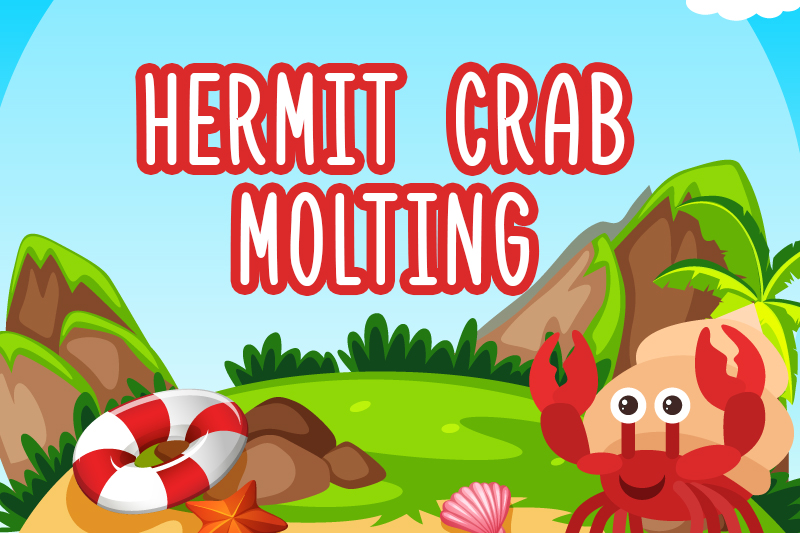But first, What is Molting?
Molting basically means the process of which your hermit crab grows. It also involves the process of shedding the exoskeleton of your hermit crab for a short time. Your hermit crab won’t be able to move afterward since it has to regain its control on its muscles and also while its new exoskeleton hardens.
While your Hermit Crab on its molting process, it will begin to eat its old exoskeleton. This process helps your hermit crab to recycle the calcium and other minerals needed for its new exoskeleton’s health and durability.
During this molting process, your hermit crabs are highly vulnerable and they will be burying themselves underground, so don’t panic or think it’s dead! Doing this allows them for their molting hormones to be secreted so that the ecdysis (also known as shedding process) can begin.
Signs That Your Hermit Crab is in the Molting Process

- If your hermit crab is healthy and suddenly digging a lot more than its usual habit of digging, it’s a sign that it’s about to molt.
- Overeating and drinking a lot is also an indicator that your hermit crab is a sure sign of molting. They are doing this since they are storing fat. Also, you won’t be able to see this overeating as this only occurs at night time. If you happen to suddenly see a small black bubble on the left side of the stomach under its fifth pair of legs, don’t be worried it’s the extra fat and water that your hermit crab stored.
- Lethargy and restlessness (changing shells repeatedly and digging)
- A sudden change of body color, usually ashy colored while legs and claw will turn white-ish.
- More time spending in water than in dry parts.
- Missing limbs? Don’t worry, as these are one of the signs that your Hermit Crab is about to go in the molting process. A gelatinous bud will grow into the part of that missing limb, as time passes a limb will be surrounded by a clear chitin sheath. And as the molting process closes your Hermit Crab’s limb will be more defined.
- Your Hermit Crab’s eye stalks will look like facing away from each other, like a V-shape instead of parallel. It’ll also appear white-ish and dull.
The Molting Process
Hermit Crab’s Molting Process consisted of four stages:
- Proecdysis also is known as pre-molt: This is the process before the actual molting period wherein the new exoskeleton is deposited below the old one. Any missing appendages will start to grow as limb buds that will expand during the molting process. Also, during premolt, your hermit crab is actively storing salts which is beneficial in the shedding process and also storing water and food on its body.
- Ecdysis also is known as molt: The actual process of molting where active shedding of the Hermit Crab’s exoskeleton is happening. This is also the shortest of the four stages of the molting process. Salts and water stored by the Hermit Crab are then used by the hemolymph (similar to human blood) to create a hydrostatic pressure to crack the exoskeleton and be able to withdraw from it.
- Metecdysis is also known as post-molt: The process where in your freshly molted hermit crab begins to harden up its body and to recover its ability to move. Your hermit crab will also start to consume its old exoskeleton which is necessary to recycle the minerals and salts to aid in the calcification process.
- Anecdysis also is known as intermolt: The longest of the four processes of molting and during this period your Hermit Crab’s exoskeleton will begin to harden and bulk up as calcium and minerals are now consumed by it. And also, this process gradually goes longer since it depends on your hermit crab’s growth. Smaller hermit crabs will molt a lot more compared to the bigger ones.
